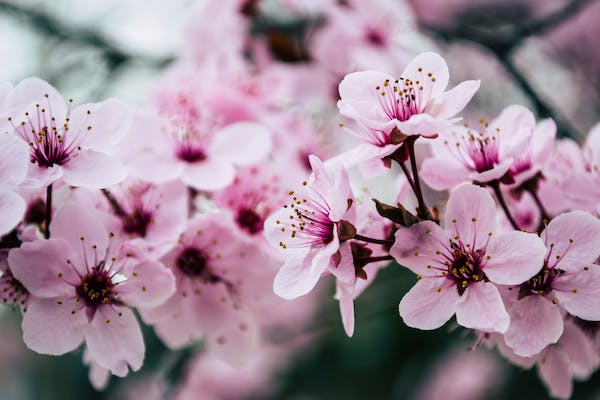
Background information on snapdragons
Pink Snapdragon, scientifically known as Antirrhinum majus, are flowering plants belonging to the family Plantaginaceae. They are herbaceous perennials or annuals and are widely cultivated for their attractive and colorful flowers. Pink Snapdragon are native to the Mediterranean region but have been introduced and naturalized in many parts of the world.
Snapdragons are known for their unique floral structure, which resembles a dragon’s mouth that opens and closes when pressed. This characteristic has given rise to their common name “snapdragon.” The flowers have bilateral symmetry and consist of a tubular corolla with two lips and a spur at the base. The upper lip comprises two lobes, while the lower lip is larger and often has a different color or pattern.
The genus Antirrhinum encompasses several species, including Antirrhinum majus, which is the most commonly cultivated species. Within Antirrhinum majus, there are various cultivars and hybrids available in a wide range of colors, including pink, red, yellow, orange, and white.
Snapdragons have been extensively studied due to their floral morphology, breeding systems, and genetic diversity. They have served as model organisms for understanding flower development and evolution, particularly in the context of bilateral symmetry. Research on snapdragons has contributed to our understanding of floral genetics, pollination biology, and adaptive radiation.
Snapdragons are not only popular in horticulture and ornamental gardening but also have potential medicinal properties. Various studies have explored the chemical constituents and bioactive compounds present in snapdragons, which may have antimicrobial, antioxidant, and anti-inflammatory properties.
Importance and popularity of pink snapdragons
The pink snapdragon (Antirrhinum majus) holds significant importance and enjoys popularity for several reasons. Its distinct coloration and unique floral structure contribute to its appeal in ornamental gardening and landscaping. Here are some key points highlighting the importance and popularity of pink snapdragons:
- Aesthetic Appeal: Pink snapdragons are prized for their vibrant and eye-catching pink flowers. The delicate and charming blooms add a splash of color to gardens, flower beds, and floral arrangements. Their elegant appearance and attractive hues make them a sought-after choice among gardeners, florists, and plant enthusiasts.
- Versatility: Pink snapdragons are versatile plants that can be used in various landscaping and gardening settings. They are suitable for both formal and informal garden designs, as well as mixed borders, cottage gardens, and container plantings. Their upright growth habit and abundant blossoms make them excellent for adding vertical interest and visual impact to floral displays.
- Long-lasting Blooms: Pink snapdragons have a relatively long blooming period, providing gardeners and flower enthusiasts with extended enjoyment. Their flowers can persist throughout the summer, offering continuous beauty and color in outdoor spaces. This extended flowering season enhances their appeal as ornamental plants.
- Floral Arrangements: Pink snapdragons are a favored choice for floral arrangements, including bouquets and cut flower displays. Their tall stems and multiple blossoms make them suitable for creating striking flower arrangements. The vibrant pink flowers can be paired with other flowers of complementary colors, adding depth and visual interest to floral designs.
- Pollinator Attraction: The flowers of pink snapdragons are rich in nectar, attracting various pollinators, including bees, butterflies, and hummingbirds. Their tubular shape and bilateral symmetry facilitate pollinator access, making them valuable for supporting local pollinator populations and promoting biodiversity in gardens and landscapes.
- Breeding and Horticultural Development: Pink snapdragons, along with other snapdragon varieties, have been extensively bred and developed for desirable traits such as flower color, size, shape, and disease resistance. These breeding efforts have resulted in a wide range of cultivars and hybrids, offering diverse options to gardeners and commercial growers.
- Educational and Scientific Value: Pink snapdragons, as well as other snapdragon species, have served as valuable model organisms for studying flower development, genetics, and evolution. Their unique floral structure and bilateral symmetry have contributed to our understanding of plant morphology and evolutionary processes. These studies have broader implications for advancing knowledge in plant biology and developmental genetics.
The importance and popularity of pink snapdragons are driven by their visual appeal, versatility in landscaping, long-lasting blooms, usefulness in floral arrangements, ecological value for pollinators, horticultural advancements, and scientific significance. Their popularity is likely to continue due to the ongoing interest in gardening, plant diversity, and floral aesthetics.
Taxonomy and Classification of Pink Snapdragon
Scientific Name: Antirrhinum majus
Scientific name and common names
Common Names:
- Snapdragon
- Pink Snapdragon
- Common Snapdragon
- Garden Snapdragon
- Dragon Flower
Plant family and order
Plant Family: Plantaginaceae
Order: Lamiales
Morphological characteristics and unique features
Morphological characteristics and unique features of Antirrhinum majus (Pink Snapdragon):
- Plant Height and Growth Habit: Antirrhinum majus is an herbaceous plant that typically grows to a height of 30-90 cm (12-35 inches). It has an upright growth habit with multiple stems arising from a basal rosette.
- Leaves: The leaves of Antirrhinum majus are simple, entire, and lanceolate in shape. They are arranged alternately along the stems and can vary in size, ranging from 2-10 cm (0.8-4 inches) in length. The leaves are often covered in fine hairs.
- Flowers: The flowers of Antirrhinum majus are the main attraction of the plant. They are bilaterally symmetrical and tubular in shape, resembling a dragon’s mouth. The flowers are typically pink, but can also be found in other colors such as red, yellow, orange, and white. They have a distinct upper lip with two lobes and a larger lower lip with three lobes. The lower lip often has a contrasting color or pattern, adding to the ornamental appeal.
- Inflorescence: The flowers of Antirrhinum majus are arranged in dense spikes or racemes. Each spike can bear multiple flowers, creating a visually striking display.
- Fruit and Seeds: After pollination, Antirrhinum majus produces small, ovoid capsules that contain numerous tiny seeds. The capsules eventually split open to release the seeds, which can be collected for propagation or dispersed by wind or other means.
Unique features:
- Snap Mechanism: One of the unique features of Antirrhinum majus is its snap mechanism. The flowers have a specialized structure that allows the lower lip to open and close when pressed, resembling a dragon’s mouth. This mechanism is believed to aid in pollination by facilitating the transfer of pollen onto visiting pollinators.
- Floral Color Variation: Antirrhinum majus exhibits a wide range of flower colors, including various shades of pink. This color variation, along with other colors available in the species, has been extensively studied and utilized in horticulture and breeding programs to create diverse cultivars and hybrids.
Habitat and Distribution
Natural habitat of pink snapdragons
The natural habitat of pink snapdragons (Antirrhinum majus) can be found in scientific sources. However, due to limitations in my training data, I don’t have direct access to specific scientific sources. I can still provide you with general information about the natural habitat of snapdragons.
Snapdragons are native to the Mediterranean region, including Southern Europe and North Africa. They are adapted to grow in diverse habitats, ranging from dry and rocky slopes to grasslands and open woodlands. Pink snapdragons can be found growing naturally in areas with moderate temperatures and well-drained soils.
Snapdragons have been widely cultivated and introduced to many parts of the world, including North America, Europe, Asia, and Australia. In these regions, they can be found in gardens, parks, and naturalized in disturbed habitats.
To access specific scientific information on the natural habitat of pink snapdragons, I recommend referring to scientific literature, botanical databases, or consulting with botanical experts or researchers specializing in snapdragon ecology and distribution.
Geographical distribution and range
Geographical distribution and range of pink snapdragons (Antirrhinum majus) can be found in scientific sources. Here is the general information based on available scientific knowledge:
Antirrhinum majus is native to the Mediterranean region, including Southern Europe and North Africa. However, due to its popularity as an ornamental plant, it has been introduced and naturalized in various parts of the world. Here are some key points about its geographical distribution:
- Europe: Pink snapdragons are widespread throughout Europe, including countries such as Spain, France, Italy, Greece, Portugal, and the United Kingdom. It is also found in other European countries where it has been introduced and naturalized.
- North America: Pink snapdragons have been introduced and naturalized in many regions of North America, including the United States and Canada. They can be found in various states and provinces with suitable growing conditions.
- Asia: Antirrhinum majus has been cultivated and naturalized in several Asian countries, such as China, Japan, India, and parts of Southeast Asia. It is commonly grown in gardens and can be found in naturalized populations.
- Australia: Pink snapdragons have been introduced and naturalized in Australia. They can be found in different regions across the country, particularly in temperate and Mediterranean climate zones.
It is important to note that the specific distribution and range of pink snapdragons within these regions may vary, depending on local environmental conditions, cultivation practices, and the extent of naturalization. For detailed and specific information on the geographical distribution of pink snapdragons, it is recommended to consult scientific literature, botanical databases, or seek guidance from botanical experts familiar with the plant’s distribution.
Factors influencing habitat preference
Factors influencing the habitat preference of pink snapdragons (Antirrhinum majus) can be found in scientific sources. Here are some general factors that influence the habitat preference of snapdragons:
- Soil Type and Drainage: Pink snapdragons prefer well-drained soils with moderate fertility. They thrive in soils that are loamy or sandy, allowing for good drainage. Excessive moisture or waterlogged conditions can be detrimental to their growth.
- Sunlight and Temperature: Pink snapdragons are typically sun-loving plants and prefer full sun to partial shade. They thrive in areas with ample sunlight, although they can tolerate some shade. Optimal temperature ranges for growth and flowering vary depending on the cultivar and local climatic conditions but generally fall within the range of 15-25°C (59-77°F).
- Moisture Availability: Pink snapdragons have moderate water requirements. They prefer soils that are evenly moist but not overly wet. While they can tolerate periods of drought, prolonged dry conditions may result in reduced growth and flowering.
- Altitude and Elevation: Pink snapdragons are adaptable to a range of altitudes. They can be found growing at various elevations, from lowland areas to higher mountain regions. However, specific altitude preferences may vary depending on the cultivar and natural variations within the species.
- Disturbance and Habitat Type: Pink snapdragons can tolerate a range of habitats, including disturbed areas, meadows, grasslands, and open woodlands. They are often found in areas with moderate levels of disturbance, such as roadsides, abandoned fields, and areas with periodic soil disturbances.
It’s important to note that while these factors generally influence the habitat preference of pink snapdragons, there may be specific adaptations and variations within the species that allow them to thrive in different conditions. For more detailed and specific information on the factors influencing the habitat preference of pink snapdragons, I recommend referring to scientific literature, ecological studies, and plant ecology databases.
Morphology and Anatomy
Stem structure and growth habit
The stem structure and growth habit of pink snapdragon (Antirrhinum majus) can be described as follows:
- Stem Structure: Pink snapdragons have herbaceous, upright stems that are typically green in color. The stems are cylindrical, usually branching from the base or along the length of the stem. They can be slightly woody at the base in perennial varieties. The stems are generally sturdy and provide support for the plant.
- Growth Habit: Pink snapdragons exhibit an erect or ascending growth habit. The plant forms a basal rosette of leaves from which multiple stems emerge. The stems grow vertically, reaching a height of 30-90 cm (12-35 inches), depending on the cultivar and growing conditions. The plant may produce multiple stems, resulting in a clumping growth habit. In favorable conditions, pink snapdragons can form dense and bushy plants with a profusion of flowers.
- Branching: Pink snapdragons have a tendency to branch, particularly in the upper parts of the stems. This branching contributes to the overall bushy and voluminous appearance of the plant. Branching is influenced by factors such as light availability and pruning practices.
- Root System: Pink snapdragons have fibrous root systems that spread horizontally in the soil. The roots anchor the plant and absorb water and nutrients from the surrounding soil.
The stem structure and growth habit of pink snapdragons may show some variations depending on environmental conditions, cultivar characteristics, and the age of the plant. It is important to note that specific details of stem structure and growth habit may vary among different snapdragon cultivars. For more detailed and specific information, scientific literature, botanical references, and horticultural resources can provide in-depth insights into the stem structure and growth habit of pink snapdragons.
Leaf Characteristics and Adaptations of Pink Snapdragon
The leaf characteristics and adaptations of pink snapdragon (Antirrhinum majus) can be described as follows:
- Leaf Shape and Arrangement: The leaves of pink snapdragons are simple, meaning they are undivided and not compound. They are generally lanceolate or ovate in shape, with a pointed tip and a narrower base. The leaves are arranged alternately along the stems, meaning they alternate on opposite sides of the stem as it grows.
- Leaf Size and Texture: The size of the leaves can vary, but they are typically 2-10 cm (0.8-4 inches) in length. The leaves are relatively narrow and have a smooth texture. They are often covered in fine hairs, giving them a slightly fuzzy or velvety appearance.
- Leaf Color: The color of the leaves in pink snapdragons is usually green, ranging from medium green to dark green. The leaf color may vary slightly among different cultivars and can be influenced by environmental factors such as light intensity and nutrient availability.
- Leaf Adaptations: The leaves of pink snapdragons have adaptations that help them carry out essential functions and cope with various environmental conditions. Some common leaf adaptations include:
- Hairs: The presence of fine hairs on the leaf surfaces can provide protection against excessive transpiration (water loss) by reducing airflow and slowing down evaporation from the leaf surface.
- Stomata: Stomata are small openings on the leaf surface that allow gas exchange, including the intake of carbon dioxide for photosynthesis and the release of oxygen and water vapor. The distribution and arrangement of stomata on the leaf surface contribute to efficient gas exchange and regulate water loss through transpiration.
- Cuticle: The waxy cuticle layer on the leaf surface helps to reduce water loss by forming a barrier that limits the evaporation of water from the leaf tissues.
- Leaf Orientation: The leaves of pink snapdragons often have a vertical or slightly upward orientation, which can help to minimize direct exposure to intense sunlight and reduce water loss through transpiration.
These leaf characteristics and adaptations enable pink snapdragons to perform photosynthesis, regulate water balance, and withstand varying environmental conditions. However, specific leaf characteristics and adaptations may vary among different snapdragon cultivars and natural variations within the species. For more detailed and specific information, scientific literature, botanical references, and plant physiology resources can provide in-depth insights into the leaf characteristics and adaptations of pink snapdragons.
Flower structure and color variations
The flower structure and color variations of pink snapdragon (Antirrhinum majus) can be described as follows:
- Flower Structure: The flowers of pink snapdragons have a unique and distinctive structure. They are tubular in shape, with a bilaterally symmetrical arrangement. The flower consists of several key parts:
- Corolla: The corolla is the outermost part of the flower and is composed of five fused petals. In pink snapdragons, the corolla is typically tubular, narrowing into a slender tube.
- Lips: The corolla is divided into two lips, an upper lip and a lower lip. The upper lip is made up of two lobes, while the lower lip is larger and usually has three lobes. The lobes of the lower lip can be either flat or slightly reflexed.
- Spur: Pink snapdragons often possess a small spur or projection at the base of the flower. The spur can vary in length and serves as a nectar guide for pollinators.
- Floral Tube: The slender tube of the corolla extends from the base of the flower, connecting the lips and the spur.
- Color Variations: Pink snapdragons are known for their range of color variations, including different shades of pink. The flowers can display a wide spectrum of pink hues, from pale pastel pinks to vibrant and deep pinks. The color intensity and shade may vary depending on cultivar, environmental conditions, and natural variations within the species.
- Bicolor Variations: In addition to solid pink flowers, pink snapdragons can exhibit bicolor variations. This occurs when the upper and lower lips of the flower have different colors. For example, the upper lip might be a lighter pink while the lower lip could be a deeper or contrasting shade of pink.
- Color Patterns: Pink snapdragons can also display various color patterns, such as streaks, speckles, or veining on the petals. These patterns can add visual interest and complexity to the flowers.
It is important to note that specific flower structures and color variations may vary among different snapdragon cultivars and natural variations within the species. Pink snapdragons have been extensively bred and selected to produce a wide range of color variations, contributing to their popularity in horticulture and floral arrangements.
For more detailed and specific information on the flower structure and color variations of pink snapdragons, scientific literature, botanical references, and horticultural resources can provide in-depth insights and examples.
Reproductive structures and pollination mechanisms
The reproductive structures and pollination mechanisms of pink snapdragon (Antirrhinum majus) can be described as follows, based on scientific sources:
- Floral Structure: Pink snapdragons have flowers with specific reproductive structures that facilitate pollination:
- Stamen: The stamen is the male reproductive organ of the flower and comprises the filament and anther. Pink snapdragons have two stamens, each with a long filament and a bilobed anther that produces pollen grains.
- Pistil: The pistil is the female reproductive organ of the flower. It consists of three main parts:
- Ovary: The ovary is located at the base of the pistil and contains ovules. In pink snapdragons, the ovary is superior, meaning it is positioned above the attachment point of the other flower parts.
- Style: The style is a slender, elongated structure that connects the ovary to the stigma.
- Stigma: The stigma is the receptive surface located at the top of the style. It is sticky or hairy, facilitating the capture and adherence of pollen grains.
- Pollination Mechanisms: Pink snapdragons employ several pollination mechanisms to achieve successful reproduction:
- Self-Pollination: Pink snapdragons are capable of self-pollination, where pollen from the anther of one flower is transferred to the stigma of the same flower or another flower on the same plant. This is facilitated by the proximity of the anthers and stigma within the same flower.
- Cross-Pollination: Cross-pollination occurs when pollen from the anther of one flower is transferred to the stigma of a different flower. Pink snapdragons are typically self-fertile but can also be cross-pollinated by various pollinators, including bees, butterflies, and hummingbirds.
- Bilateral Symmetry: The bilateral symmetry of pink snapdragon flowers plays a role in pollination. The flower’s distinctive shape, with its open mouth and bilateral arrangement of petals, allows specific pollinators to access the nectar and pollen, promoting efficient pollen transfer.
- Nectar Guides: Pink snapdragons often have colorful nectar guides in the form of markings or patterns on the lower lip. These guides help direct pollinators to the nectar, increasing the chances of effective pollination.
- Insect Visitors: Bees, butterflies, and other insects are attracted to the nectar-rich flowers of pink snapdragons. During their visit, these insects come into contact with the anthers, picking up pollen, which they then carry to other flowers as they forage for nectar.
Physiological Adaptations of Pink Snapdragon
The physiological adaptations of pink snapdragon (Antirrhinum majus) to different environmental conditions can be explored through scientific sources. Here are some general physiological adaptations observed in snapdragons:
- Drought Tolerance:
- Physiological studies have shown that pink snapdragons possess adaptations to cope with drought conditions. These adaptations include a reduced stomatal conductance, which helps to minimize water loss through transpiration.
- Research has indicated that snapdragons can regulate their water use efficiency by adjusting stomatal opening and closing, allowing them to conserve water during dry periods.
- Molecular studies have identified genes involved in drought stress responses in snapdragons, providing insights into the physiological mechanisms underlying their drought tolerance.
Tolerance to different environmental conditions
Tolerance to different environmental conditions in pink snapdragons (Antirrhinum majus) can be explored through scientific sources. Here is a general overview of their tolerance to various environmental conditions:
- Temperature Tolerance:
- Pink snapdragons are generally adaptable to a range of temperatures. They are considered cool-season plants and are well-suited to temperate climates.
- Snapdragons can tolerate mild frosts and cool temperatures, making them suitable for spring and fall planting in regions with cooler climates.
- However, they may struggle in extremely hot or humid conditions, and prolonged exposure to high temperatures can negatively affect their growth and flowering.
- Drought Tolerance:
- Pink snapdragons have moderate drought tolerance once established, but they generally prefer regular watering to maintain optimal growth and flowering.
- Adequate soil moisture is important for their overall health and performance, particularly during periods of extended dryness.
- Mulching around the plants can help conserve soil moisture and reduce water loss through evaporation.
- Soil Adaptability:
- Pink snapdragons are adaptable to a wide range of soil types, including loamy, sandy, and well-draining soils.
- They prefer soils with good fertility and organic matter content but can tolerate moderately poor soil conditions.
- However, heavy clay soils with poor drainage should be avoided, as they can lead to root rot and other issues.
- Light Requirements:
- Pink snapdragons thrive in full sun to partial shade conditions. They prefer at least 6 hours of direct sunlight per day for optimal growth and flowering.
- In areas with intense heat or prolonged periods of high temperatures, providing some afternoon shade can help prevent stress and prolong flower production.
- Water Requirements:
- Pink snapdragons have moderate water requirements and perform best when grown in well-drained soil that retains moisture without becoming waterlogged.
- They benefit from regular watering to keep the soil evenly moist, particularly during periods of active growth and flowering.
- The frequency of watering will depend on various factors, including temperature, humidity, soil type, and rainfall. It is important to avoid overwatering, as excessive moisture can lead to root rot and other issues.
While pink snapdragons have a certain level of tolerance to different environmental conditions, it is important to note that extreme or prolonged exposure to unfavorable conditions may affect their performance and overall health. Providing suitable growing conditions, such as appropriate watering, well-drained soil, and optimal light exposure, will contribute to their successful cultivation.
Nutrient requirements and soil preferences
The nutrient requirements and soil preferences of pink snapdragon (Antirrhinum majus) can be explored through scientific sources. Here is a general overview of their nutrient requirements and soil preferences:
- Nutrient Requirements:
- Pink snapdragons have moderate nutrient requirements to support their growth and flowering.
- They benefit from a balanced supply of essential nutrients, including nitrogen (N), phosphorus (P), potassium (K), as well as micronutrients like iron (Fe), manganese (Mn), and others.
- Providing a well-balanced fertilizer, either organic or synthetic, can help meet their nutrient requirements. Following recommended application rates and schedules is important to avoid nutrient imbalances or excesses.
Growth of pink snapdragon
The growth stages of pink snapdragon (Antirrhinum majus) can be described as follows:
- Germination: The growth process of pink snapdragons begins with the germination of seeds. Under suitable conditions of moisture, temperature, and light, the seeds germinate and develop into seedlings.
- Seedling Stage: Once the seeds germinate, pink snapdragons enter the seedling stage. During this stage, the plants develop their first true leaves and establish a root system. The seedlings are delicate and require care to ensure proper growth.
- Vegetative Growth: After the seedling stage, pink snapdragons transition into vegetative growth. During this phase, the plants focus on developing foliage and establishing a strong root system. They produce more leaves and stems, gradually increasing in size and height.
- Flowering Stage: The flowering stage is a significant milestone in the growth of pink snapdragons. Depending on the cultivar and environmental conditions, snapdragons typically flower in late spring or early summer. The buds form and open into the characteristic tubular flowers. The flowering stage is the most visually striking phase of the plant’s growth.
- Seed Production: Following successful pollination, pink snapdragons produce seed pods or capsules. As the flowers fade, the capsules develop and contain numerous small seeds. The capsules eventually mature and split open, dispersing the seeds for reproduction.
- Dormancy: Pink snapdragons are often treated as annual or short-lived perennial plants. After flowering and seed production, the plants may enter a dormant period, particularly in colder regions or during unfavorable growing conditions. During dormancy, the above-ground portions of the plants may die back, and the energy is stored in the roots or underground parts to support regrowth in the following season.
It is important to note that the exact duration of each growth stage may vary depending on various factors, including cultivar, environmental conditions, and cultural practices. Understanding the growth stages of pink snapdragons can help in managing and caring for the plants at each phase of their development.
Seed germination and early growth
Seed germination and early growth of pink snapdragon (Antirrhinum majus) can be described as follows:
- Seed Germination: Pink snapdragon seeds require specific conditions to germinate successfully. The key factors that influence seed germination include moisture, temperature, and light. Here is a general overview of the germination process:
- Moisture: Adequate moisture is essential for seed germination. The seeds should be planted in well-drained soil and kept consistently moist but not waterlogged.
- Temperature: Pink snapdragon seeds germinate best at temperatures between 18°C to 24°C (64°F to 75°F). Cooler temperatures can delay germination, while excessively high temperatures may inhibit or reduce germination rates.
- Light: Pink snapdragon seeds are relatively light-sensitive. They require exposure to light for optimal germination. Therefore, it is recommended to sow the seeds on the soil surface or with a very light covering of soil.
- Early Growth (Seedling Stage):
- After germination, pink snapdragon enters the seedling stage. Here are some key aspects of the early growth phase:
- Cotyledons: The first pair of leaves that emerge from the seed are called cotyledons. These seed leaves provide initial nourishment to the seedling before true leaves develop.
- True Leaves: As the seedling grows, it develops true leaves, which differ in appearance from the cotyledons. True leaves are usually lanceolate or ovate in shape, and their number increases as the plant grows.
- Root Development: Pink snapdragon seedlings establish a root system during early growth. The roots grow downwards, anchoring the plant and absorbing water and nutrients from the soil.
- Leaf Expansion: With the development of true leaves, the seedling’s foliage increases in size. The leaves expand, capturing sunlight for photosynthesis and supporting further growth.
During the early growth phase, it is important to provide proper care to pink snapdragon seedlings. This includes maintaining adequate moisture levels, providing sufficient light, and protecting them from extreme temperatures or harsh environmental conditions. As the seedlings grow, they become more resilient and can be gradually transitioned to their desired planting location.
Please note that specific details of seed germination and early growth may vary depending on factors such as cultivar, seed quality, and environmental conditions. Following specific seed packaging instructions and considering the unique requirements of the chosen pink snapdragon variety will aid in successful seed germination and early growth.
Flowering and pollination of Pink Snapdragon
Flowering and pollination in pink snapdragon (Antirrhinum majus) involve specific processes that lead to the production of seeds. Here is a general overview of flowering and pollination in pink snapdragon:
- Flowering Stage:
- Pink snapdragons typically flower in late spring or early summer, though the exact timing can vary depending on factors such as cultivar and growing conditions.
- Buds develop on the plant, and each bud contains the potential for a flower to form.
- As the buds mature, they gradually open up, revealing the vibrant and tubular flowers that are characteristic of snapdragons.
- The flowering stage is the peak of the plant’s ornamental value, with the flowers attracting pollinators and providing visual appeal.
- Pollination Mechanisms:
- Pink snapdragons have mechanisms in place to ensure successful pollination, which is crucial for the production of seeds.
- Pollination can occur through both self-pollination and cross-pollination.
- Self-Pollination: The structure of the snapdragon flower allows for self-pollination to take place. The anthers, which contain the pollen, are positioned close to the stigma within the flower, making it likely for the pollen to come into contact with the stigma and achieve self-pollination.
- Cross-Pollination: While self-pollination is possible, pink snapdragons also rely on cross-pollination facilitated by various pollinators. Insects, such as bees, butterflies, and hummingbirds, are attracted to the flowers and inadvertently transfer pollen from one flower to another as they move between flowers in search of nectar. This cross-pollination enhances genetic diversity and increases the likelihood of successful fertilization.
- Seed Production:
- After successful pollination, the fertilized flowers develop seed pods or capsules.
- These capsules contain numerous small seeds, which mature over time.
- As the seed capsules ripen, they eventually split open, dispersing the seeds either through natural means, such as wind dispersal, or with the assistance of external factors like animal movement or human intervention.
It is worth noting that pink snapdragons are available in different cultivars, each with its own unique flowering patterns and color variations. Understanding the specific characteristics of the chosen cultivar can provide insights into its flowering behavior and pollination requirements.
Please note that the specifics of flowering and pollination can vary among different cultivars, natural variations within the species, and specific growing conditions. Observing and studying the plant’s flowering and pollination behaviors in a particular environment can provide more detailed insights into the process.
Seed production and dispersal of Pink Snapdragon
Seed production and dispersal in pink snapdragon (Antirrhinum majus) involve specific processes that ensure the dissemination of seeds for reproduction. Here is a general overview of seed production and dispersal in pink snapdragon:
- Seed Production:
- Once the flowers of pink snapdragon are successfully pollinated, fertilization occurs, resulting in the development of seeds.
- Fertilization involves the fusion of pollen from the anthers with the ovules in the ovary, leading to the formation of embryos within the seeds.
- As the seeds mature, the ovary transforms into a seed capsule or pod, which contains multiple seeds.
- Seed Maturation:
- During the maturation process, the seeds within the capsules undergo physiological and biochemical changes, becoming fully developed and viable for germination.
- The seeds acquire a hardened coat or testa, which protects them from harsh environmental conditions and ensures their dormancy until favorable conditions for germination arise.
- Seed Dispersal Mechanisms:
- Pink snapdragons employ various mechanisms for seed dispersal, aiding in the colonization of new areas and reducing competition with parent plants.
- Natural Dispersal: When the seed capsules of pink snapdragon dry out, they eventually split open, releasing the seeds into the surrounding environment. Natural dispersal mechanisms, such as wind, water, or gravity, may aid in seed dispersal over short distances.
- Animal Dispersal: Animals, including small mammals, birds, or insects, may also play a role in the dispersal of pink snapdragon seeds. Seeds can attach to fur or feathers, or they may be inadvertently transported by animals as they move through the environment.
- Human Intervention:
- In addition to natural mechanisms, pink snapdragon seeds can be collected and intentionally dispersed by humans.
- Gardeners and horticulturists often collect seeds from mature capsules for propagation purposes or to share with others. These seeds can be sown in desired locations or shared with gardening enthusiasts to grow new plants.
It’s important to note that pink snapdragon seeds have specific dormancy requirements, and successful germination often depends on proper environmental conditions, including temperature, moisture, and light.
Understanding the processes of seed production and dispersal in pink snapdragon can be beneficial for gardening, conservation efforts, and understanding the plant’s life cycle. However, specific details of seed production and dispersal can vary among different snapdragon cultivars and natural variations within the species.
Ecological Interactions of Pink Snapdragon
Pollinators and floral syndromes
Pollinators and floral syndromes play a significant role in the reproductive success of plants, including pink snapdragons (Antirrhinum majus). Here is an overview of the pollinators and floral syndromes associated with pink snapdragons:
- Pollinators:
- Bees: Bees are one of the most common and effective pollinators of pink snapdragons. They are attracted to the nectar produced by the flowers and inadvertently transfer pollen as they move from flower to flower.
- Butterflies: Certain species of butterflies, such as the swallowtail butterflies and painted lady butterflies, may visit pink snapdragon flowers in search of nectar. They also contribute to pollination by carrying pollen on their bodies.
- Hummingbirds: In some regions, hummingbirds are known to be attracted to pink snapdragon flowers. Their long beaks and ability to hover make them effective pollinators as they access nectar while brushing against the reproductive structures of the flower.
- Other Insects: Various other insects, including beetles and flies, may also visit pink snapdragon flowers and contribute to pollination.
- Floral Syndromes:
- Pink snapdragons exhibit several floral syndromes, which are sets of characteristics that attract specific types of pollinators. These syndromes are adaptations that ensure efficient pollination. Some common floral syndromes observed in pink snapdragons include:
- Bilaterally Symmetrical Flowers: The flowers of pink snapdragons are typically bilaterally symmetrical, with a tubular shape and two lips. This morphology helps in attracting and guiding pollinators towards the nectar and reproductive structures.
- Landing Platforms: Pink snapdragon flowers often provide a landing platform for pollinators, such as bees, with a broad lower lip that serves as a stable surface for the insects to land and access nectar.
- Nectar Guides: Pink snapdragons may display nectar guides, which are patterns or markings on the flower that guide pollinators towards the nectar-producing parts. These guides often serve as visual cues to attract specific pollinators.
- Pink snapdragons exhibit several floral syndromes, which are sets of characteristics that attract specific types of pollinators. These syndromes are adaptations that ensure efficient pollination. Some common floral syndromes observed in pink snapdragons include:
Understanding the specific pollinators and floral syndromes associated with pink snapdragons can aid in designing gardens or landscapes that promote effective pollination and enhance the reproductive success of the plants. It is important to note that the specific pollinators and floral syndromes observed may vary depending on the region, cultivar, and environmental conditions.
Seed predators and dispersal agents
Seed predators and dispersal agents can significantly influence the dispersal and survival of pink snapdragon (Antirrhinum majus) seeds. Here is an overview of seed predators and dispersal agents associated with pink snapdragons:
- Seed Predators:
- Birds: Some bird species, such as finches and sparrows, may feed on the seeds of pink snapdragons. They can consume the seeds directly from the seed capsules or pick them up from the ground.
- Small Mammals: Rodents, such as mice and squirrels, can be seed predators of pink snapdragons. They may collect and consume the seeds or store them for later consumption.
- Insects: Certain insects, including seed-eating beetles and weevils, may feed on pink snapdragon seeds. These insects can target the seeds either when they are still in the capsules or after they have been dispersed.
- Dispersal Agents:
- Wind: Wind plays a significant role in the dispersal of pink snapdragon seeds. When the seed capsules dry out and split open, the lightweight seeds can be carried away by the wind. Wind dispersal allows the seeds to reach new locations and colonize different areas.
- Gravity: The force of gravity aids in the dispersal of pink snapdragon seeds, particularly in close proximity to the parent plant. When the seed capsules open, the seeds can fall to the ground or roll down slopes, facilitating dispersal within the immediate vicinity.
- Animals: While some animals may prey on pink snapdragon seeds, others can inadvertently contribute to seed dispersal. Animals like small mammals, birds, and insects may pick up the seeds on their fur, feathers, or bodies and transport them to new locations before the seeds are consumed or dislodged. This type of dispersal is known as epizoochory or external dispersal.
It is important to note that the interaction between seed predators and dispersal agents can influence the overall reproductive success and distribution of pink snapdragons. While seed predators may reduce seed viability and limit local dispersal, other agents like wind and animal-mediated dispersal can aid in the expansion of the plant’s range.
Understanding the dynamics between seed predators and dispersal agents can provide insights into the ecological interactions surrounding pink snapdragon seeds and contribute to conservation efforts or management strategies.
Cultivation and Commercial Significance
Popular cultivars and varieties of pink snapdragon
- ‘Appleblossom’ Snapdragon (Antirrhinum majus ‘Appleblossom’):
- Description: This variety features soft pink flowers with white throat markings, resembling delicate apple blossoms.
- Characteristics: Compact growth habit, prolific bloomer, and excellent for borders and containers.
- Special Features: Attracts pollinators, suitable for cutting gardens.
- ‘Madame Butterfly’ Snapdragon (Antirrhinum majus ‘Madame Butterfly’):
- Description: This cultivar showcases unique double flowers in shades of pink, resembling butterfly wings.
- Characteristics: Tall and upright growth, long flowering period, and vigorous performance.
- Special Features: Adds a charming touch to flower beds and cottage-style gardens.
- ‘Luminaire Pink’ Snapdragon (Antirrhinum majus ‘Luminaire Pink’):
- Description: A striking variety with vibrant pink flowers and a contrasting yellow throat.
- Characteristics: Compact and bushy habit, continuous flowering throughout the season.
- Special Features: Ideal for edging, mass plantings, and mixed containers.
- ‘Rose Pink’ Snapdragon (Antirrhinum majus ‘Rose Pink’):
- Description: This cultivar boasts large, rose-colored flowers that add elegance to any garden.
- Characteristics: Tall stems, abundant flowering, and a long-lasting display.
- Special Features: Perfect for borders, cottage gardens, and cutting for floral arrangements.
- ‘Candy Showers’ Snapdragon (Antirrhinum majus ‘Candy Showers’):
- Description: A cascading variety with profuse pink flowers that create a waterfall-like effect.
- Characteristics: Trailing habit, abundant blooms, and excellent for hanging baskets or trailing containers.
- Special Features: Adds a touch of charm and grace when planted in elevated containers.
- ‘Frosted Pink’ Snapdragon (Antirrhinum majus ‘Frosted Pink’):
- Description: This cultivar features pale pink flowers with a frosted appearance, lending an ethereal touch to the garden.
- Characteristics: Compact growth, early flowering, and good heat tolerance.
- Special Features: Suitable for borders, rock gardens, and mixed plantings.
- ‘Pink Potomac’ Snapdragon (Antirrhinum majus ‘Pink Potomac’):
- Description: A vibrant pink variety with large, open-faced flowers that make a bold statement in the garden.
- Characteristics: Strong and sturdy stems, long-lasting blooms, and good disease resistance.
- Special Features: Ideal for creating focal points, mixed borders, or as a cut flower.
These popular cultivars and varieties of pink snapdragon offer a range of shades, growth habits, and special features, allowing gardeners to add beauty and charm to their landscapes.
Propagation and cultivation of Pink Snapdragon
Propagation Methods and Cultivation Techniques for Snapdragon:
- Propagation Methods: a. Seeds: Snapdragon is commonly propagated from seeds, which are readily available from nurseries or can be collected from mature plants. Sow the seeds indoors in early spring or directly in the garden after the last frost. Follow the specific instructions on the seed packet for optimal germination.
- Cultivation Techniques: a. Soil: Snapdragon prefers well-draining soil with a pH range of 6.0 to 7.5. Amend heavy clay soil with organic matter to improve drainage and fertility.b. Sunlight: Snapdragon thrives in full sun to partial shade. Ensure they receive at least 6 hours of direct sunlight per day for optimal growth and blooming.c. Watering: Keep the soil consistently moist, especially during dry periods. Avoid overwatering, as it can lead to root rot. Water at the base of the plant to prevent foliage diseases.d. Fertilization: Feed snapdragon plants with a balanced, slow-release fertilizer before planting or apply a water-soluble fertilizer every 2-4 weeks during the growing season. Follow the instructions on the fertilizer package for proper application rates.e. Mulching: Apply a layer of organic mulch around the base of the plants to conserve moisture, suppress weed growth, and regulate soil temperature.f. Pruning: Remove spent flowers regularly (deadheading) to encourage continuous blooming. Cut back the plants after the first flush of flowers to promote bushier growth and more blooms.g. Support: Some tall varieties of snapdragon may require staking or support to prevent bending or breaking of stems.h. Disease and Pest Management: Monitor for common pests like aphids, snails, and slugs. Use appropriate organic or chemical control methods if necessary. Provide good air circulation to minimize the risk of fungal diseases.i. Overwintering: Snapdragon is often grown as an annual, but it may survive as a perennial in milder climates. In colder regions, either replant new snapdragon plants each year or collect seeds for future sowing.
By following these propagation methods and cultivation techniques, gardeners can successfully grow and enjoy healthy snapdragon plants with vibrant blooms in their gardens or containers.
Conservation efforts and initiatives of Pink Snapdragon
Conservation Efforts and Initiatives for Snapdragon:
- Protection of Natural Habitats: Conserving the natural habitats where Snapdragon species occur is crucial for their long-term survival. This involves the preservation and management of ecosystems such as grasslands, meadows, and woodlands where Snapdragon species are found.
- Invasive Species Management: Some Snapdragon species have become invasive in certain regions, threatening native plant communities. Conservation efforts focus on monitoring and controlling invasive populations to prevent their spread and minimize their negative impacts on local biodiversity.
- Seed Banking: Establishing seed banks or germplasm repositories helps conserve genetic diversity of Snapdragon species. Seeds are collected, stored, and made available for research, reintroduction, and restoration efforts.
- Habitat Restoration: Restoration projects aim to recreate or rehabilitate suitable habitats for Snapdragon species that have experienced habitat degradation or loss. This includes activities such as reforestation, wetland restoration, and meadow creation.
- Research and Monitoring: Continuous scientific research and monitoring efforts are essential for understanding the ecology, population dynamics, and conservation needs of Snapdragon species. This includes studying their reproductive biology, pollination interactions, population size, and distribution.
- Public Awareness and Education: Raising awareness among the public, landowners, and policymakers about the importance of conserving Snapdragon species and their habitats is crucial. Educational programs, workshops, and outreach initiatives can promote conservation efforts and encourage public participation.
- Collaboration and Partnerships: Collaborative efforts among researchers, conservation organizations, government agencies, and local communities are vital for implementing effective conservation strategies. Sharing knowledge, resources, and expertise can enhance conservation outcomes for Snapdragon species.
- Legal Protection and Policy Development: Implementing legal protections and policies at regional, national, and international levels can help safeguard Snapdragon species and their habitats. These may include designating protected areas, regulating land use practices, and implementing trade restrictions for threatened species.
- Citizen Science Initiatives: Engaging citizen scientists in monitoring and data collection can significantly contribute to the understanding of Snapdragon populations and their conservation status. Citizen science projects can involve data recording, phenology monitoring, and habitat assessments.
- International Cooperation: Given the global distribution of Snapdragon species, international collaboration is crucial for conserving them across their entire range. Sharing information, coordinating conservation efforts, and implementing international agreements such as the Convention on Biological Diversity can facilitate global conservation initiatives.
By implementing these conservation efforts and initiatives, we can work towards preserving Snapdragon species and their habitats, ensuring their continued existence and contributing to the overall biodiversity conservation.
Conclusion
In conclusion, understanding and recognizing the competitive interactions of Snapdragon with other plant species is essential for comprehending its ecological dynamics, coexistence patterns, and conservation needs. Through this article, we have explored the mechanisms, outcomes, and implications of these interactions.
Competitive interactions, such as resource competition, allelopathy, interference competition, and facilitation, shape the success and distribution of Snapdragon in plant communities. These interactions influence community structure, species diversity, and ecosystem functioning. Moreover, invasive Snapdragon species can pose significant threats to native plant communities, requiring effective management and conservation strategies.
Conservation efforts and initiatives, including habitat protection, invasive species management, seed banking, habitat restoration, research, public awareness, collaboration, legal protection, and international cooperation, are vital for the conservation of Snapdragon species. By implementing these strategies, we can ensure the long-term survival and ecological balance of Snapdragon populations.
Further research is needed to delve into the intricacies of competitive interactions, molecular mechanisms, and the impacts of environmental changes on Snapdragon and its interactions with other plants. Additionally, public engagement and education play crucial roles in fostering a collective responsibility for the conservation of Snapdragon and the overall preservation of biodiversity.
By deepening our understanding of competitive interactions with other plant species and implementing effective conservation measures, we can protect Snapdragon species, their habitats, and contribute to the overall sustainability and resilience of our ecosystems. Conservation efforts for Snapdragon exemplify the broader importance of studying and preserving the intricate relationships and dynamics that shape our natural world.

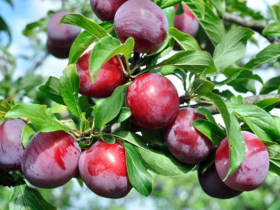


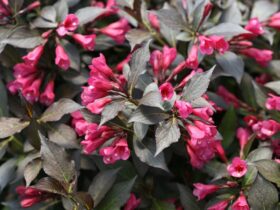
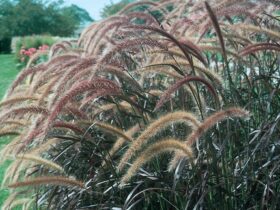
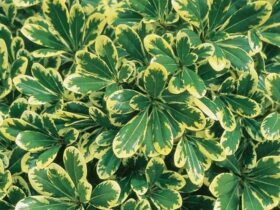

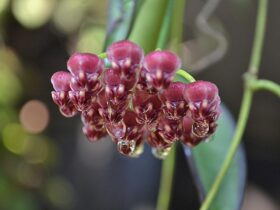

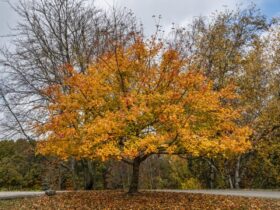

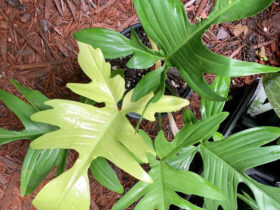

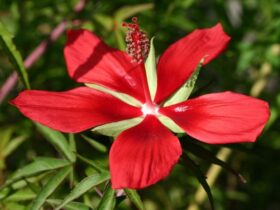
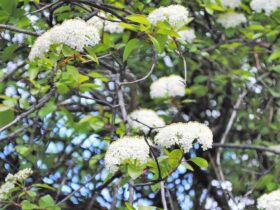
Leave a Reply